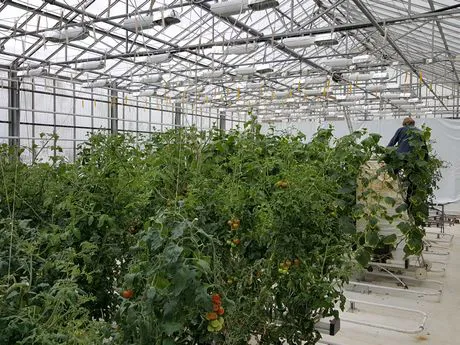
There are several products grown in one 'chamber'.
A half hour drive from Reykjavik lies the small town of Hveragerdi. The only reason why you might know this village is either because of its hot springs, which are now flooded with tourists after they were advertised in a guidebook, or the small horticulture department of the Agricultural University of Iceland. The school is run by a handful of professors, who annually instruct a few dozen students to prepare them for jobs in various aspects of horticulture.
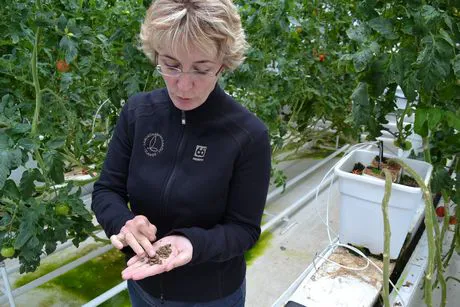
Gudridur Helgadottir shows the volcanic substrate on which the tomatoes are grown.
Outdated campus
The campus is hidden behind the village, its sight blocked by some trees. On campus there are various, somewhat outdated greenhouses. Banana plants are grown in one of these greenhouses, and experiments are carried out with other tropical crops. The greenhouses certainly meet old Dutch standards. One greenhouse was built in the 50’s, but it is still standing proud. The professors and students make a great effort to keep the greenhouses and the plants in good condition.
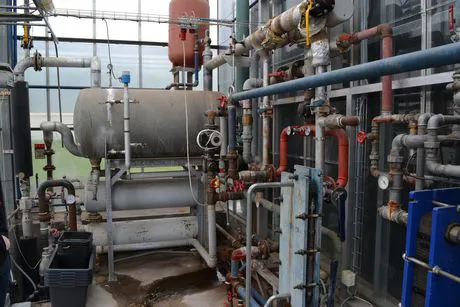
The heating system of the greenhouse.
In the early years, the Icelandic Horticultural College at Reykir, even though it was a public institution, a part of its income came from vegetables grown on the premises and sold on the market. In this way, the school was able to cover a good part of the costs. But those years are far in the past. Since the college became a public institution and merged with the Agricultural University of Iceland, the campus has relied solely on government funds. Those are hardly sufficient to maintain the few buildings on campus. Because of a strong autumn storm, a part of the roof of the main building had to be replaced, but the rest of the facilities could also do with new roofs.
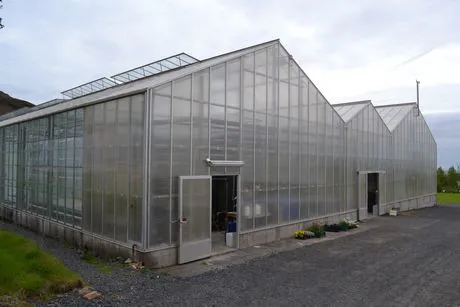
One of the three greenhouses at the campus.
Hot water source and creative heating system
In order to heat the greenhouses and buildings, the University has its own hot wells, where steam flows from the ground. "The soil here consists of a hot rock formation. The water that seeps in is converted into steam, and that’s what we harvest from the ground," explains Gudridur Helgadóttir, of the AUI. With a source 500 metres deep, the steam reaches the surface at temperatures of between 120 and 135 degrees Celsius. That energy is free, but the maintenance is costly. The mineral-rich water clogs the pipes after some time; therefore, the piping has to be cleaned annually.
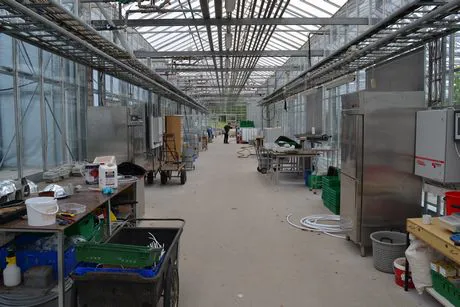
The main corridor, left and right are the 'chambers' where te products are grown.
The greenhouses are equipped with a creative heating system. Again, it is the combination of passion and small budgets that leads to creative solutions. A tangle of pipes and valves are the base for the greenhouse’s heating. Beneath the glass, some of the products grown include striped tomatoes, cucumbers and yellow tomatoes. There is also room for herbs. All the environmental conditions in the greenhouse can be controlled but in one chamber various species of plants are grown together for teaching purposes. “The conditions in here are not ideal for any of the plant, because they are in the same space," said the teacher. "But we need plants to teach students about handling them, therefore we have to compromise in that chamber and see what can be done."
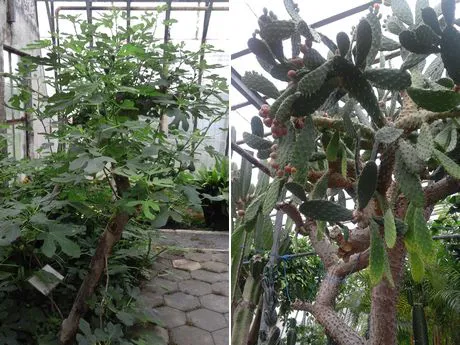
Some more tropical plants: a fig and a cactus.
Growth of horticultural sector
The study year has just been completed and the AUI is preparing for a long summer holiday. 40 to 50 students are waved off, the greenhouses are cleared and the staff take care of the maintenance. The average age of students is just over 30 years of age. "Often, they already have work experience in other sectors. We don’t really have students under 18, but that's also because we do not offer general subjects. "After a period of two years and an internship of 60 weeks, the students are ready. They can then enrol in higher level studies.
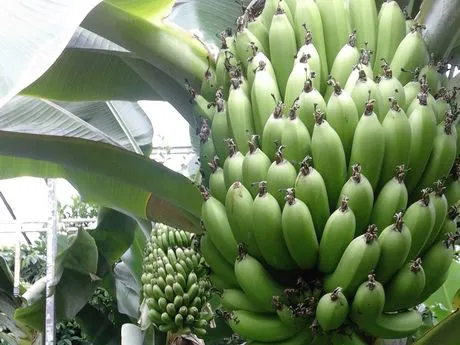
Banana's in an Icelandic greenhouse.
There is enough work in horticulture in Iceland. "Students are usually already offered an internship before graduation. The industry needs more staff. "The economy is picking up; unemployment in horticulture is around zero percent, which means that it is difficult to find staff for many sectors. The sector also attracts migrants, especially from Poland and the Baltic states.
Boundless optimism
This breeding ground for Icelandic producers has a unique greenhouse where tropical and southern species are grown. In between the figs, coffee and grapes, you can find the last 100 banana plants in Iceland. It was with boundless optimism that banana plants were brought to Iceland in the early twentieth century.
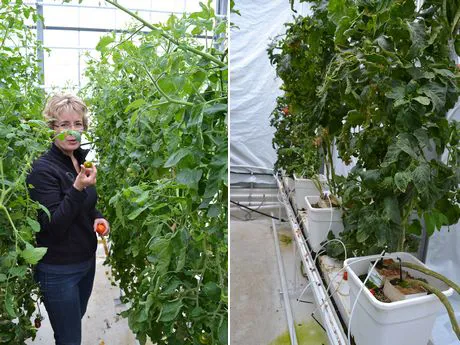
Gudridur shows the different tomatoes which are grown in the greenhouse. A vulcanic substrate is used for the growing process.
In the 20’s of the last century, the first commercial greenhouse cultivation was introduced in Iceland. "That coincided with the launch of the district heating projects," says Gudridur. "In the early years, we tried everything, including bananas and grapes." Viticulture in greenhouses went defunct in the 70’s, when the government removed a number of import restrictions. The Icelandic grape could not compete with the imports.
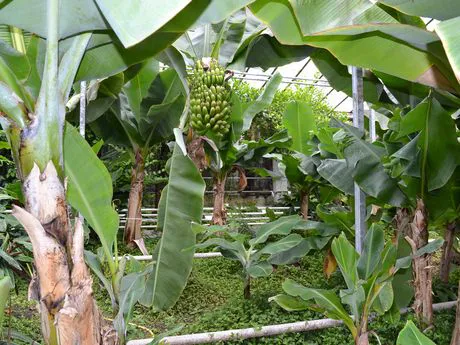
It takes 1.5 years before bananas can be harvested.
Gros Michel bananas?
That the cultivation of bananas in Icelandic greenhouses was not commercially feasible is something that growers discovered in the mid-50’s, and the last banana plants were donated to the AUI, which took care of the plants. Sixty years later, the acreage amounts to 500 to 1000 m2. "The banana plants have become a part of the image of Iceland; they are part of our culture."
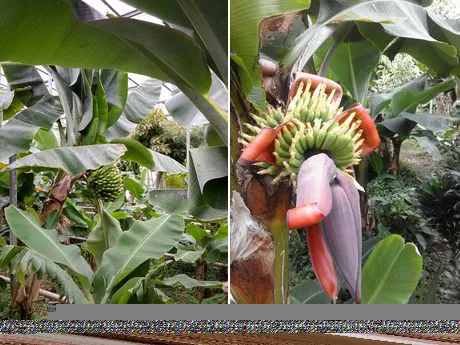
Of which variety these banana plants are, is unknown.
It takes nearly one and a half years before banana plants bear fruit. But to what breed they belong is actually unclear. The origin of the plants goes back before the outbreak of the Panama disease in the 50’s, which exterminated the Gros Michel or the Big Mike. This banana variety was the most extended in those years. After the disease destroyed the plantations, the Cavendish took over this dominant position. The banana plants in the greenhouse, hidden in the Icelandic wilderness, may yet belong to this ancient variety, but the University is not certain. The mystery surrounding Icelandic bananas has consequently been only partially solved.
More information:
University of Iceland
Gudridur Helgadottir
+354 433 5000
gurry@lbhi.is
www.lbhi.is
